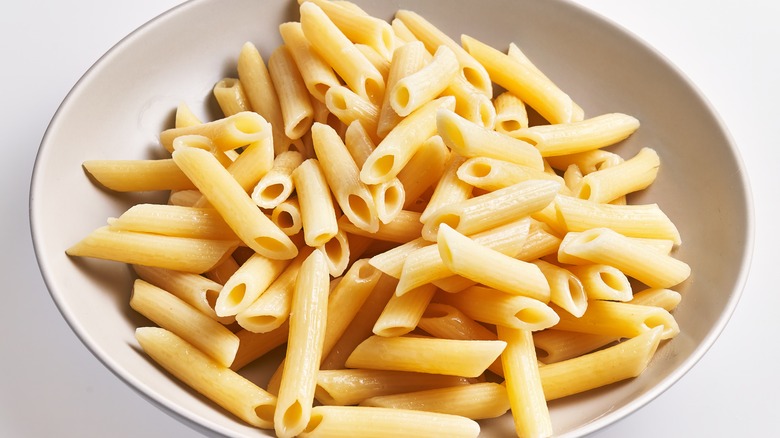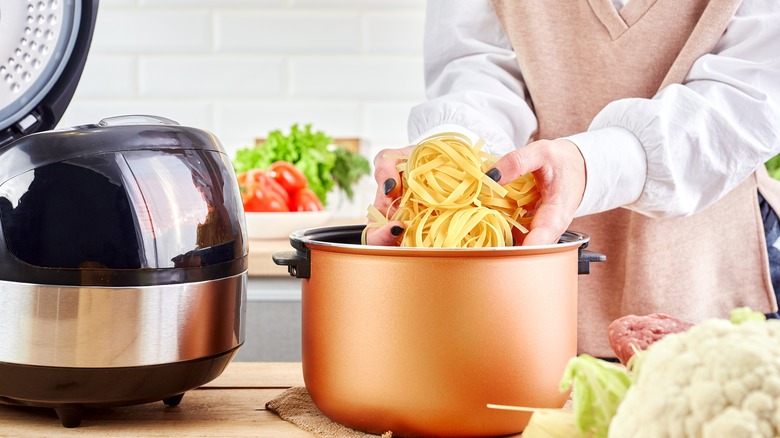The Hands-Free Way You Should Be Cooking Your Pasta
Can you really cook pasta with no hands? Of course, boiling water shouldn't be touched, so in that sense, all pasta cooking should be hands-free. You still need to put the pasta in the pot, though, even if the pot in question is a rice maker. Yes, rice maker. Despite the name, this appliance is no one-trick pony. The things you can make in a rice cooker range from soups to scrambled eggs and pancakes to pasta. The last of these is a particularly useful pasta cooking hack since it involves less pot-watching than the traditional method, and there's less water to drain when the noodles are done.
To get started, put the dry noodles into the rice cooker, making sure they come no more than halfway up the sides since they'll double in volume as they cook. For each 2 ounces of pasta, add about a cup and a half of water (or less if you prefer your noodles al dente). If you salt the water, only use a small amount since most of it will be absorbed into the noodles instead of being washed down the drain. Close the rice cooker and press the start button.
Once the water boils, the appliance will switch to the keep warm setting, but the pasta may need another 10 minutes or so to simmer in the residual heat. Open the lid every so often to stir the pasta so it won't stick, and pour off the remaining water once it's cooked.
No rice cooker? A crockpot works, too
If you don't have a rice cooker, there's another appliance that can heat your pasta in an equally hands-free fashion, although it will take more time. True to its name, the slow cooker isn't the fastest option, but it will get the job done while you do other things (like taking a pre-dinner nap). Pour about 4 cups of water per pound of pasta into the slow cooker (along with some salt, if desired) and set it on high. Don't bother adding oil to the pasta water, though, since this just makes the noodles so greasy that the sauce slides right off.
When the water starts simmering, add the pasta to the pot. If you're using long noodles like fettuccine or spaghetti, you'll probably need to break them in half first, but this is true for the rice cooker method, as well. Close the lid, turn the heat to low, and cook the pasta for another two to three hours.
While the above method works for plain pasta, you can also save yourself some time by cooking the pasta in sauce. Our slow cooker lasagna recipe makes use of this technique — the raw lasagna noodles (which, yes, need to be broken) are layered with sauce and cheese and soften as the lasagna slowly cooks. The best part of simmering the noodles in sauce is that there's no draining to be done, making it the most hands-free method of all.

